Text
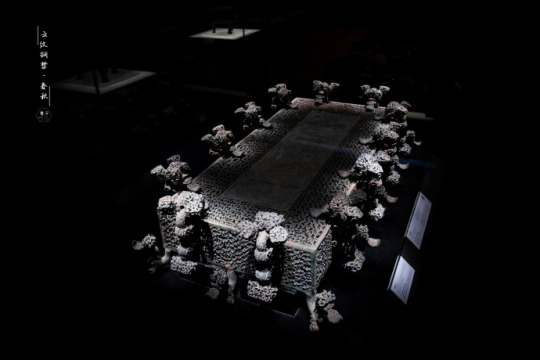

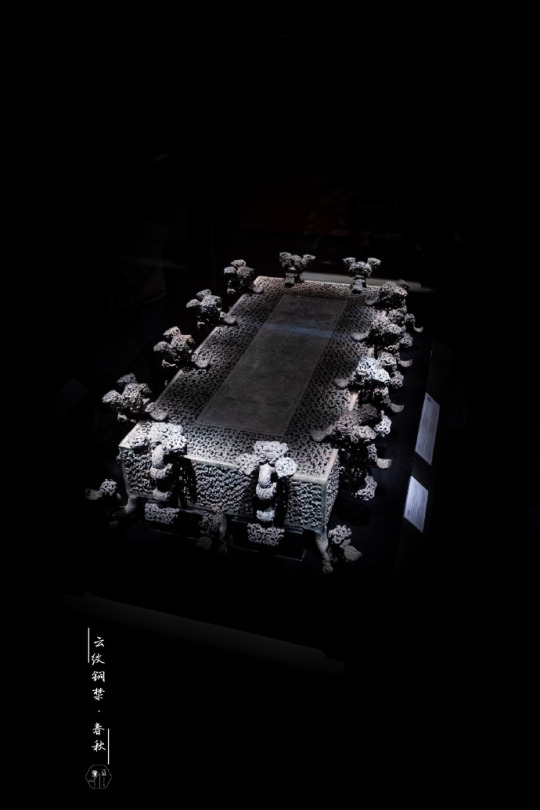



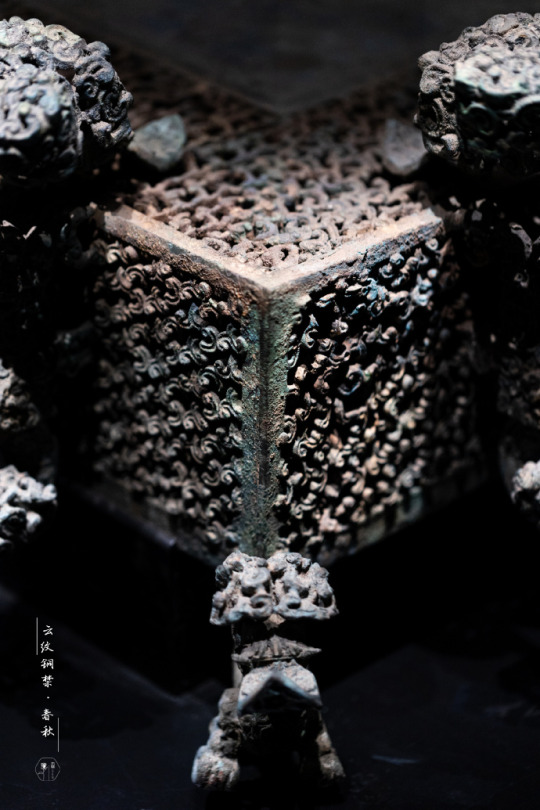

Cloudy Wine Table of The Spring and Autumn Period
Another attribute of the antique bar: a bronze wine table Jin (禁).
The name of this piece of furniture involves social advertising. Jin means “forbidden”. The name is aimed at potential consumers, encouraging them to be moderate in drinking.
It was believed that the Shang and Xia dynasties fell into decline due to alcohol abuse. The term itself has been in use since the Zhou Dynasty, when the first Dry Law was proclaimed. Wine was allowed only in rituals, in other cases, drinking it entailed the death penalty. For the same reason, it could be assumed that the table also had a religious purpose.
The wine table belonged to the Grand Chancellor Zi Geng during the reign of King Kang of Chu (楚康王).
It was manufactured with a lost-wax casting, a technology that is more often used in jewelry. The wine table rests on twelve dragons that serve as its legs. Twelve more surround it, trying to climb onto the tabletop from all sides.
Sophisticated clouds are not just for decoration. It is an allegory of the primordial forces, accumulated between Heaven and Earth, in action. The very pictograph for Qi, invented just in the Spring and Autumn period, refers to the clouds.
Finely crafted, the table was unearthed in fragments. It was a feat on the part of the restorers to bring it together. Rebuilding under the guidance of the bronze ware expert Wang Changqing took more than two years.
On display in Henan Museum (河南博物院).
#ancient china#chinese culture#chinese art#chinese history#table#table styling#wine table#bronze design#bronze art#bronze#zhou dynasty#Spring and Autumn period#State of Chu#House of Mi#pattern
35 notes
·
View notes
Text


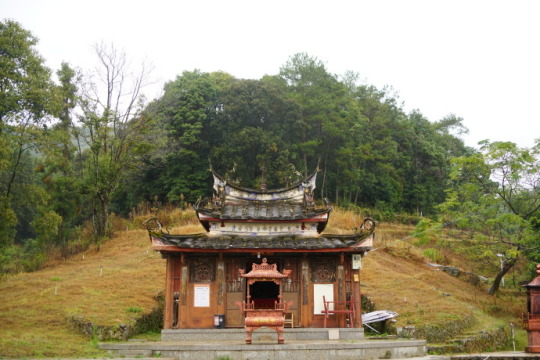
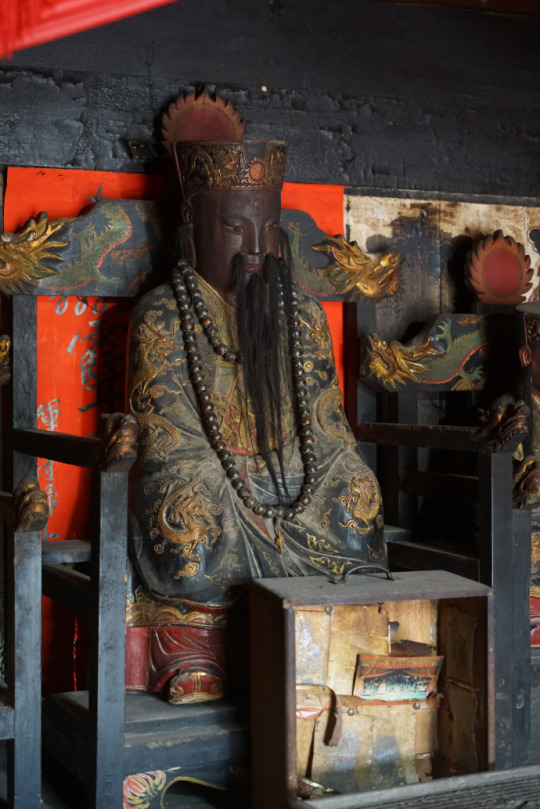



Wan'an Palace (萬安宮), a cozy and old rural temple in Dehua village (德化仙境村), Fujian, dedicated to Thunder deities. Natural detail of the fairy landscape.
Photo: ©鸿慈永祜
#ancient china#chinese culture#taoism#chinese mythology#chinese architecture#chinese art#taoist magic#taoist practices#wooden architecture#wooden buildings#chinese customs#taoist#chinese folk religion#chinese temple#religious art#temple architecture#Taoist temple#daoism#daoist#rural#countryside#Thunder deities#thunder rites#Leifa
51 notes
·
View notes
Text
Terminology Jumble With Fu Talismans
Modern manuals and studies designate by the term fu any objects of magical purpose, involving an inscription and/or graphic symbols. However, in China, there has never been a single homologue for the word “talisman”. Fu as “talisman” is an obvious and pretty recent misnaming.
Continue reading Terminology Jumble With Fu Talismans
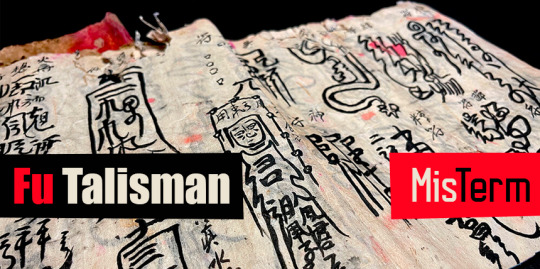
View On WordPress
#ancient China#Chinese culture#Chinese history#Chinese mythology#Maoshan#Shangqing#talisman#Taoism#Taoist alchemy#Taoist healing#Taoist magic#Taoist practices#Taoist sorcery
47 notes
·
View notes
Text

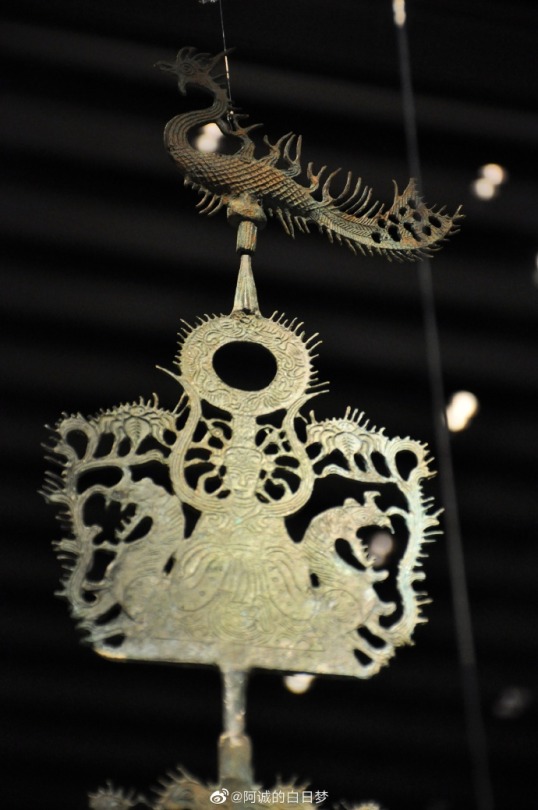
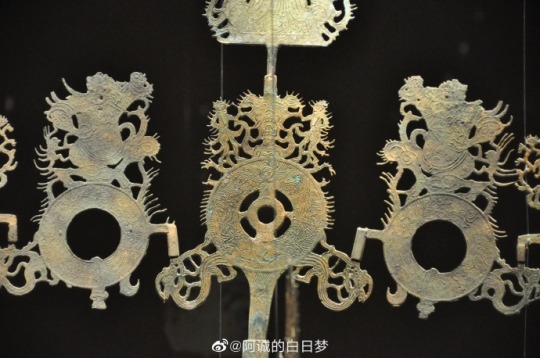


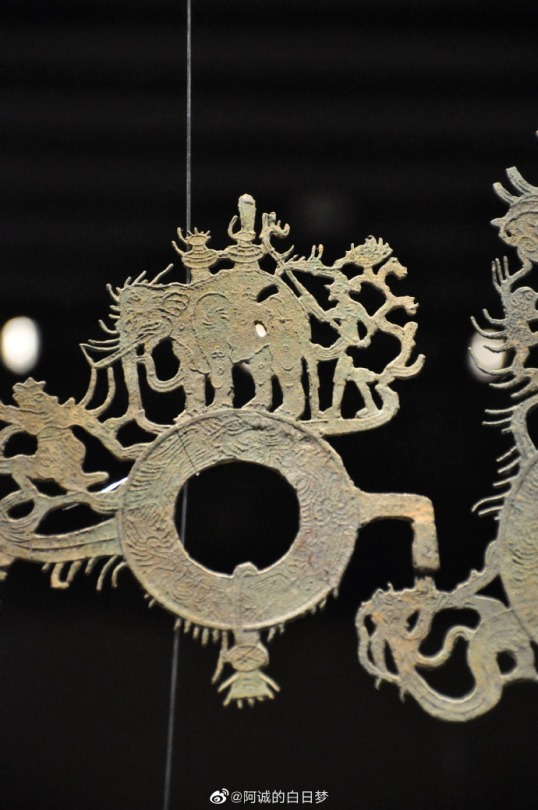
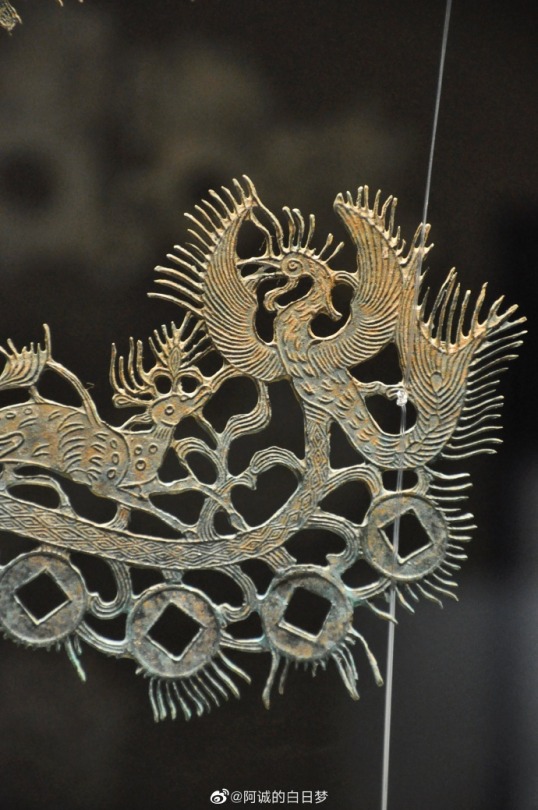
Han Dynasty Bronze Money Tree
The most cherished human dream is cast in bronze – the dream of money growing on trees.
Chinese custom associates the money tree with abundance and prosperity. The money tree as a burial item served to ensure that the deceased continue to prosper in the afterlife. Elephants laden with wealth roam along the branches emanating from the trunk. The ensemble of auspicious figurines refers to all kinds of blessings.
Pecuniary symbolism is combined with pretty archaic depictions of phoenixes and taotie-like (饕餮) imagery. The treetop Phoenix is a later modification of the Solar Raven, so the artifact becomes more and more related to the World Tree.
On display in Mianyang Museum (綿陽博物館), Sichuan.
Photo: ©阿诚的白日梦
#chinese art#ancient china#chinese culture#chinese mythology#bronze design#bronze art#bronze#han dynasty#tomb art#mythical creatures#money tree#wealth#coins#talisman#phoenix#prosperity#feng shui#world tree
35 notes
·
View notes
Text

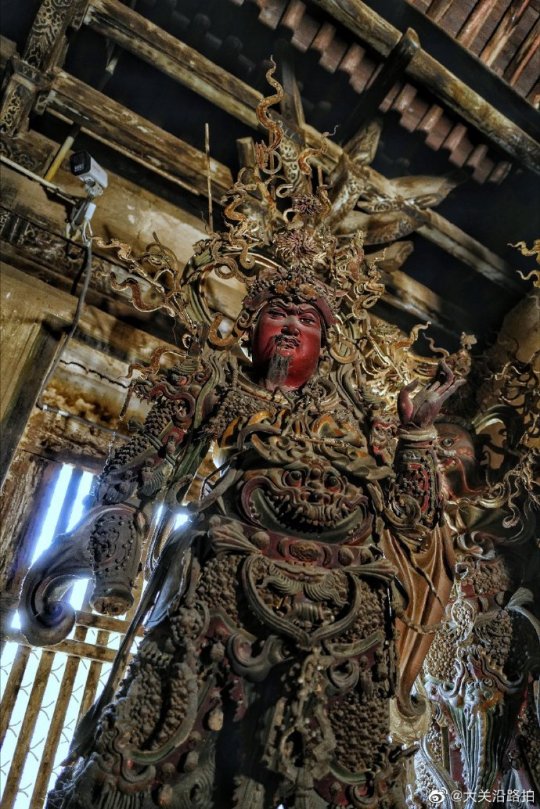
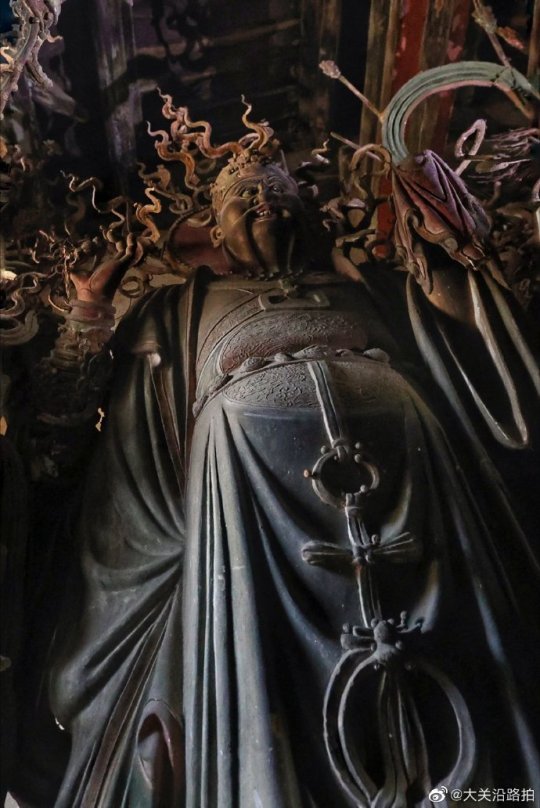

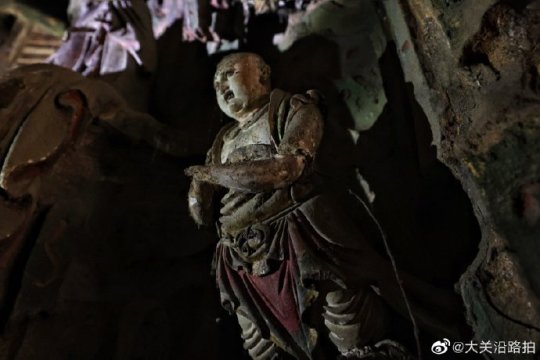




Extreme Baroque: Iron Temple On The Rice Mountain
Grotesque images from the Buddhist Iron Temple (鐵佛寺).
Located on the Rice Mountain (米山), Mixi (米西村) village, Jincheng, Shanxi, the temple is of an unknown construction date. The earliest record on the stone pillar in the main hall dates back to the seventh year of the Dading (大定) period of the Yuan or Jin dynasties. There is evidence that the temple was reconstructed in the third year of Wanli (1575). However, in the county annals, it is mentioned no earlier than the Qing dynasty.
These astonishing, presumably Ming statues owe their creation to the proximity of an iron ore. Iron frames made it possible to give the clay figures intricate poses and frilly decor.
Photo: ©大关沿路拍
#ancient china#chinese culture#chinese mythology#chinese art#chinese architecture#yuan dynasty#jin dynasty#chinese temple#statues#sculptures#scultpure#buddhist temple#buddhist#buddhist deities#religious art#buddhism#ming dynasty#qing dynasty#statuary#religious imagery
124 notes
·
View notes
Text


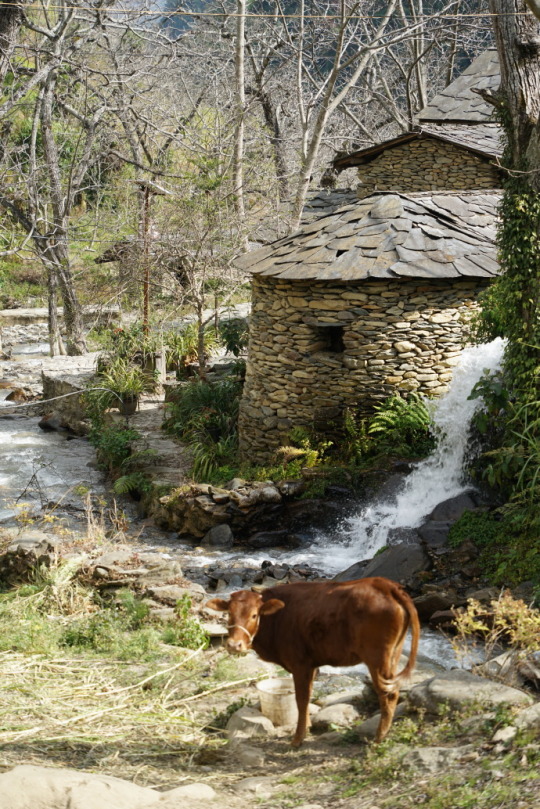



An old stone mill on the river in Shili (詩禮), Fengqing County, Yunnan.
Photo: ©鸿慈永祜
#ancient china#chinese culture#qing dynasty#chinese architecture#ming dynasty#rural landscape#rural#mill#water mill#landscape#nature#scenery#old china#chinese customs#countryside
96 notes
·
View notes
Text
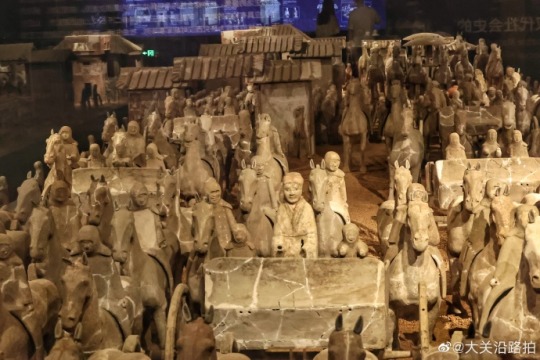
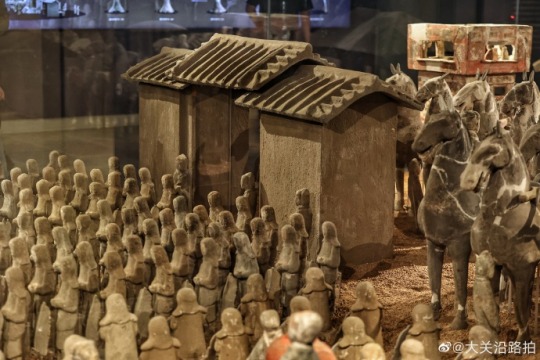
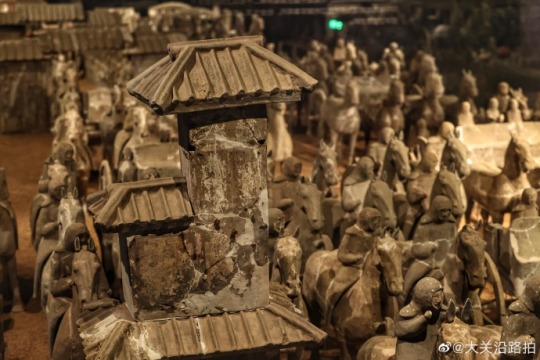


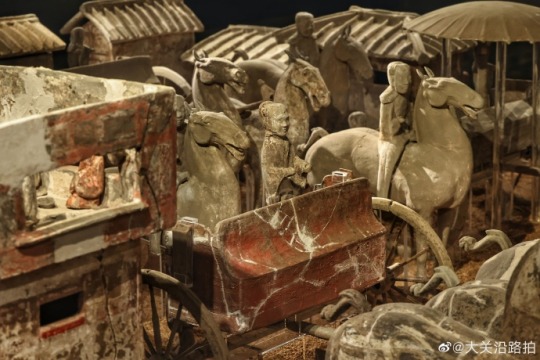
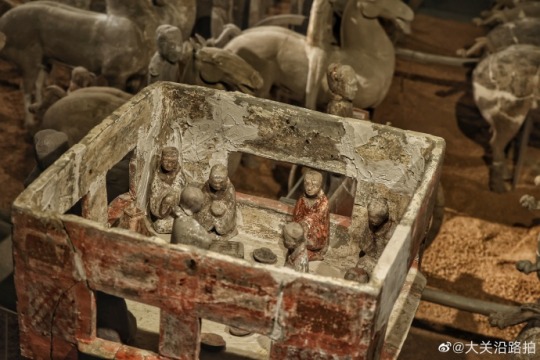

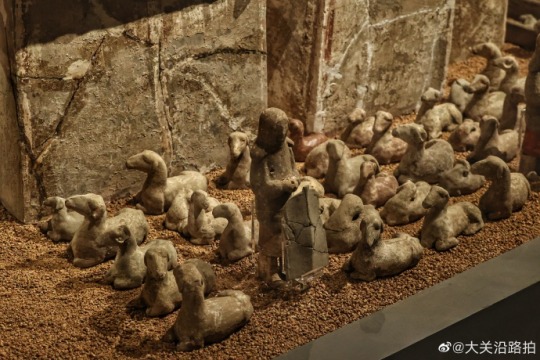

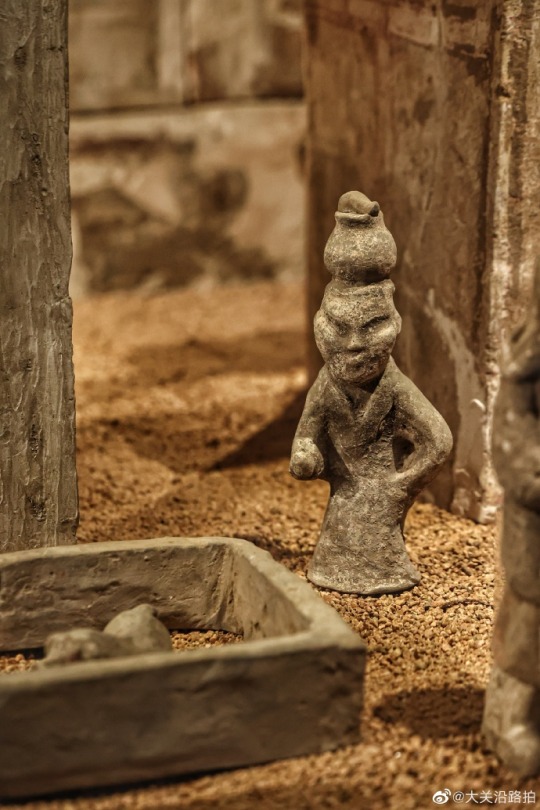
Several shots from a clay installation, impressive for its verisimilitude. It reproduces a large-scale scene of traveling by horse-drawn carriages and the life of aristocratic manors in the Western Han Dynasty.
Qi Heritage Museum (齊文化博物館), Zibo, Shandong.
Photo: ©大关沿路拍
#ancient china#chinese art#chinese history#chinese culture#western han dynasty#chinese miniatures#miniature art#sculpture art#ancient tomb#archeology#clay#clay art#clay sculpting#figurine#pottery#ceramic art#ceramic#tomb art#chinese customs
57 notes
·
View notes
Text
Mandate Of Heaven And Supreme Justice
In the Zhou dynasty, the concept of the Mandate of Heaven, revolutionary for Chinese philosophy, emerged and took root for millennia. According to the then political-religious narrative, the Mandate of Heaven was given to the most worthy and righteous one. While from the very beginning it served as an encouraging rationale for overthrowing the Shang dynasty, more and more ambiguities arose as the…

View On WordPress
#ancient China#anthropology#Chinese culture#Chinese customs#Chinese history#Chinese philosophy#Mandate of Heaven#philosophy#Shang dynasty#Spring and Autumn period#traditional society#Zhou dynasty
54 notes
·
View notes
Text

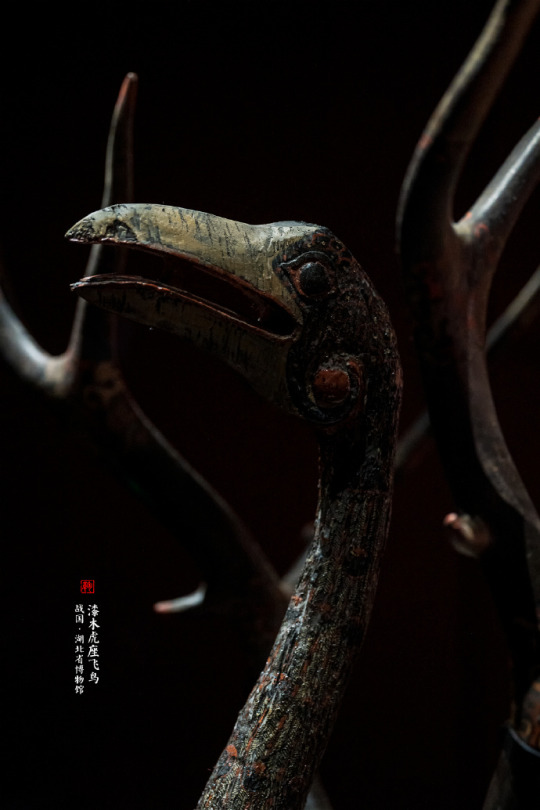
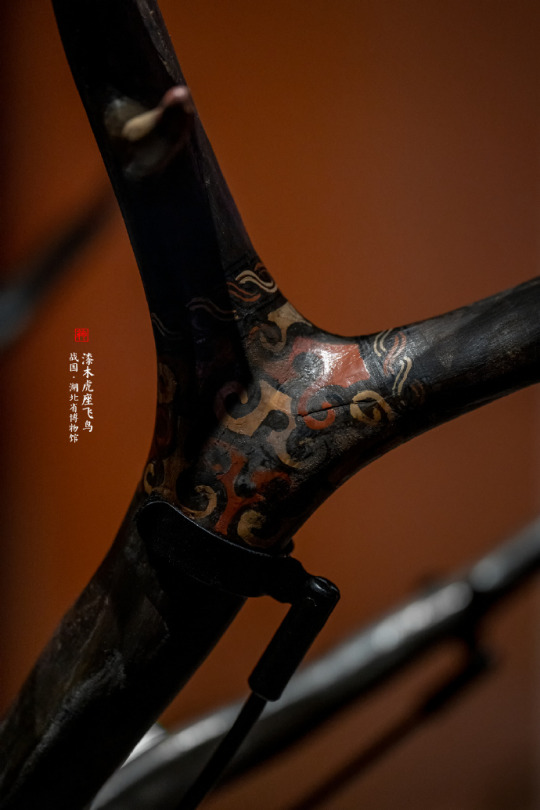
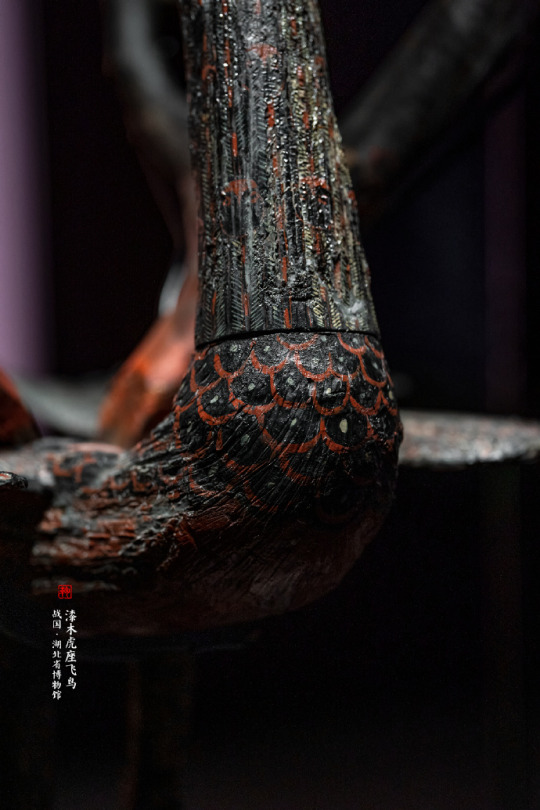
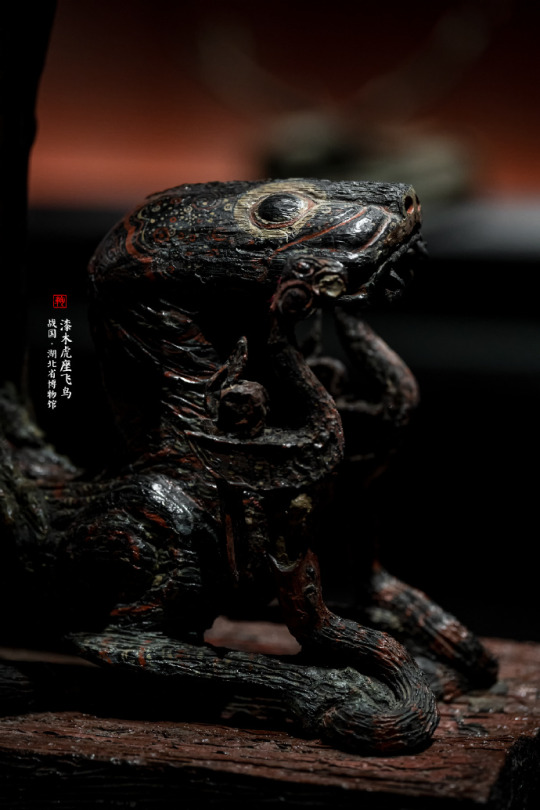



Bird, Tiger, Serpents and a Pair of Antlers: Warring States Art Device
Another remarkable sur of the pre-Taoist period.
The sculptural group is dominated by a mighty Bird, whose wings are complemented by antlers. Some have rashly classified it as the Phoenix, according to another version it is a Crane. However, I would warn against light-minded ornithological typing. The thumbnail Tiger serves as a pedestal for the Bird, pressing two serpentine bodies with its paws. The coiled snakes are devouring a pair of fliers.
The artifact may turn out to be a drum stand common at the time. Other figurines of antlered birds standing on tigers are known. This common motif unites the spiritual animals of the Lower and Upper Worlds. The amalgamous zoomorphic imagery is probably of shamanic origin.
Antlered and winged beings were also a widespread pattern in depiction of the zhenmushou (鎮墓獸), tomb guardians. The solemn or ferocious creatures served as the owner's spiritual animals in the afterlife and guides on the ascent to Heavens.
The entire lacquered wood sculpture group is painted black with subtle gold and red ornamentation. The object was unearthed from the Tomb No. 1 in Jiuliandun (九連墩1號墓), Zaoyang, Hubei. Now it is in Hubei Provincial Museum (湖北省族館).
Photo: ©湖北省族館
#ancient china#chinese culture#chinese mythology#chinese art#warring states era#warring states period#tomb art#ancient tomb#zhenmushou#zoomorphic#spiritual animal#totem pole#totem#bird art#bird#Phoenix#tiger#lacquer#lacquerware#burial#sculpture#statues#wooden sculpture#surrealism#surreal art#animal figurine
127 notes
·
View notes
Text


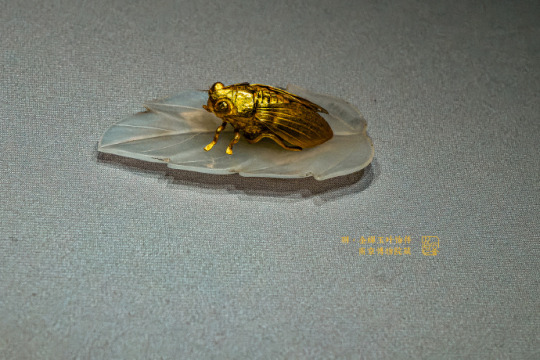

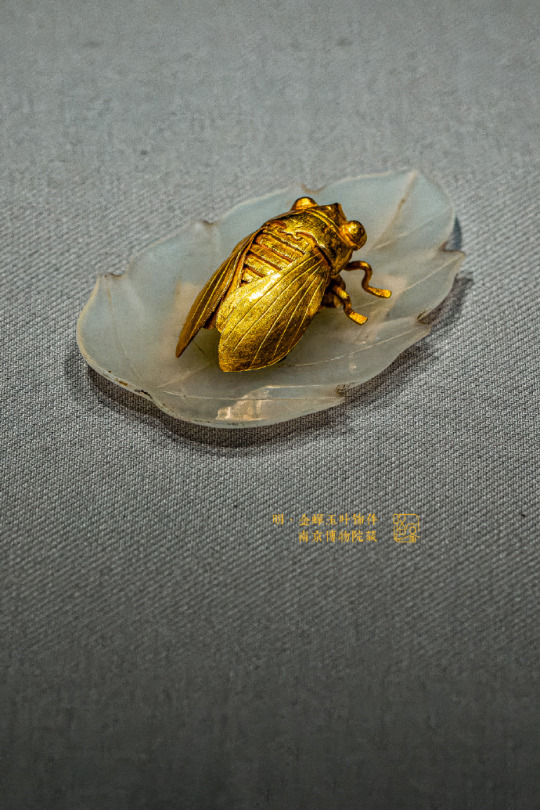
Nature Inspired: Golden Cicada Resting On a Jade Leaf
Exquisite ornament of the Ming dynasty.
Total weight of the insect figurine, made of 95% pure gold, is 4.65 g. The thickness of the finely crafted wings is only 2 mm.
Unearthed in Boshiwu (博士塢), Wufeng Mountain, Suzhou. Now exhibited in Nanjing Museum (南京博物院).
Photo: ©南京博物院
#ancient china#chinese culture#chinese art#ming dynasty#antique jewelry#chinese jewelry#jewelry design#jewelry#ancient jewelry#gold#chinese miniatures#miniature#miniature sculpture#miniature art#jade#jadeite#nephrite#carved#cicada#bug#insects#beetle#leaf art
450 notes
·
View notes
Text
Fox Spirits In Medieval Narratives: Gender Bias
The domestic worship of the fox described by Zhang Zhuo informs us that the fox spirit occupied an ambivalent position in family lives. That foxes were enshrined in private quarters and offered food consumed by humans suggests that they participated in the family as insiders. However, their supernatural power and animal nature inspired both reverence and fear, and preserved their identities as…
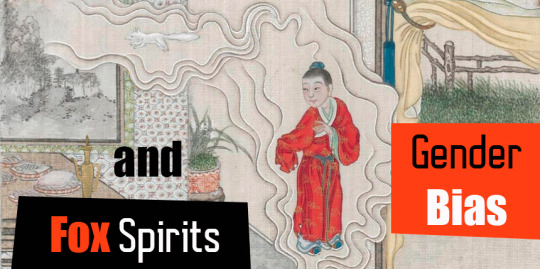
View On WordPress
#ancient China#Chinese culture#Chinese fairy tales#Chinese folk religion#Chinese history#Chinese mythology#fox#Nine-tailed fox#spiritual animal#Tang dynasty#Taoism#Taoist magic#Taoist practices
171 notes
·
View notes
Text





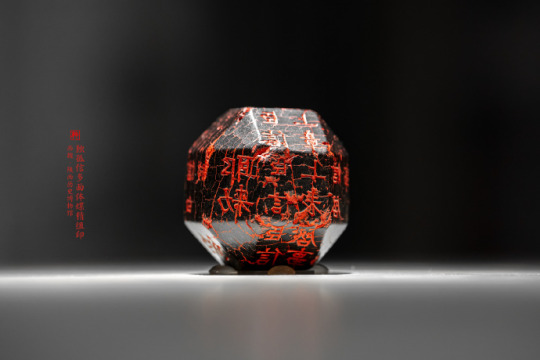
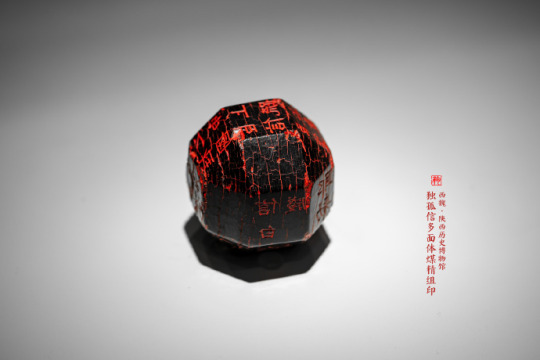

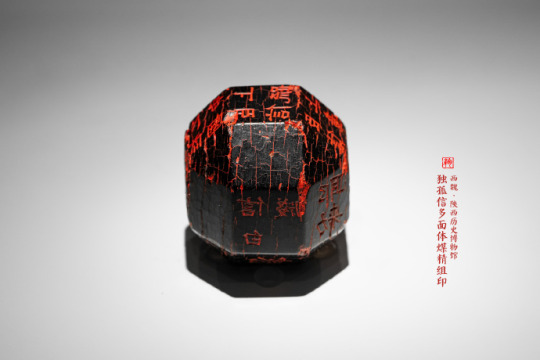
Jet-black Polyhedral Seal of The Western Wei General
This multi-faceted jet seal of the Western Wei dynasty, belonged to the famous General Dugu Xin (獨孤信). It has 8 edges and 26 sides: 18 square and 8 triangular ones. It is the ancient polyhedral seal with the largest number of facets.
Among them, 14 sides are engraved with inscriptions. The inscriptions range from one-character to five-character. The functionality is differentiated, including the use in official letters, orders, document labeling, etc.
The jet, a composite organic gem, from which the seal is carved, is known in China as “coal jade” (煤玉).
The total height of the object is 4.5 cm, the width is 4.35 cm, and the weight is 75.7 g.
The seal was accidentally discovered in 1981 by Song Qing, a student from Xunyang county (旬陽縣), Ankang, Shaanxi. While returning home from school, he picked up a weird object in the gravel on the roadside, which aroused his curiosity with its bizarre shape. Song Qing had no idea what it was. Having examined the inscriptions at home, he gave the find for examination to the local archaeological museum, where the artifact was considered not of particular cultural value.
The seal vegetated on the outskirts of the local exposition for another decade, until it was revealed and recognized by a prominent researcher Wang Hanzhang (王翰章) from the Xi'an Institute of Literature and History. On display in Shaanxi History Museum (陝西曆史博物館).
#ancient china#chinese culture#chinese history#chinese seals#seal#seals#calligraphy#lettering#chinese calligraphy#jet#carving#stone carving#gemstone#gems#gemstones#lignite#jet-black#Western Wei dynasty
274 notes
·
View notes
Text

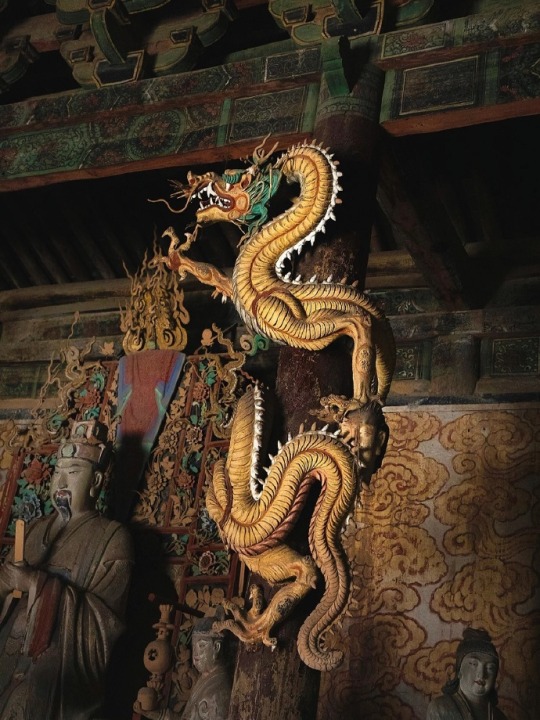

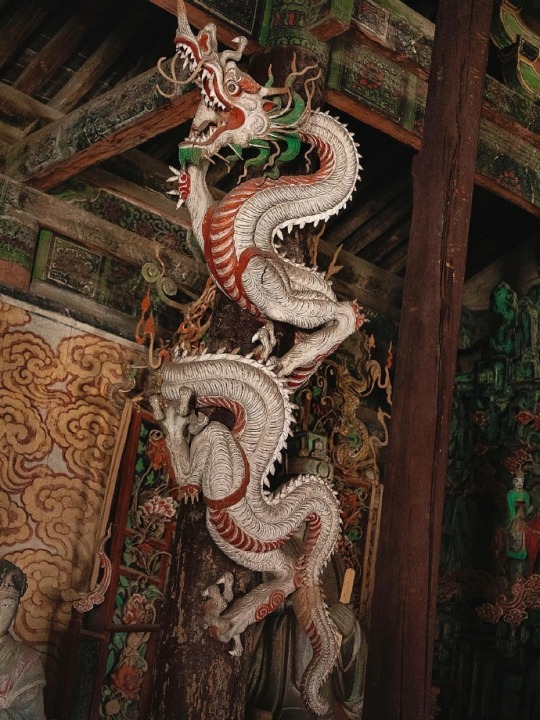

Mythological Realism: Elemental Dragons
Four-color coiled dragons on the pillars of the Supreme Talisman (Taifu) Temple (太符觀).
The dragons are painted in the colors of the primary elements, embodying the archetypal creative forces. In Chinese religious art, almost any concept can be expressed in the language of dragons.) Their children, descendants and relatives frolic on the temple walls among curly clouds.
In view of the striking liveliness, I would classify these images as mythological realism.)
Since its construction in the fifth year of the Jin dynasty (1200), the temple has been repeatedly expanded and supplemented with new buildings over the centuries. Most of the surviving statues are from the Ming dynasty.
The Supreme Talisman Temple is located in Fenyang (汾陽), Shanxi.
Photo: ©故尔耳
#ancient china#chinese culture#chinese art#chinese mythology#ming dynasty#taoist practices#religious art#chinese temple#Taoist temple#taoism#taoist#statue#sculptures#statues#daoism#jin dynasty#dragon#dragons#dragon art#creatures#wood carving#woodworking#temple architecture#wooden architecture#wooden buildings#chinese architecture
372 notes
·
View notes
Text
Portrayal of the Perfect Taoist in Early Sources
Huainanzi (淮南子), a Han dynasty text, portrays the accomplished Taoist master as a paradoxical saint, combining all polarities and transcending them.
Continue reading Portrayal of the Perfect Taoist in Early Sources

View On WordPress
#ancient China#Chinese mythology#Chinese philosophy#Han dynasty#neidan#self-cultivation#spirituality#Taoism#Taoist alchemy#Taoist meditation#Taoist metaphysics#Taoist philosophy#Taoist practices
8 notes
·
View notes
Text

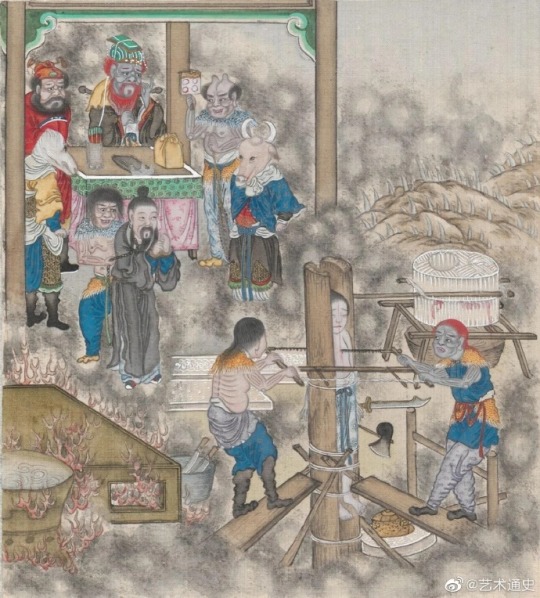




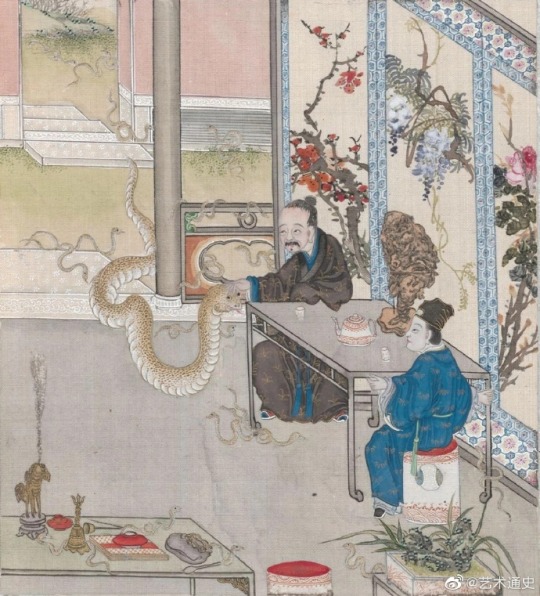
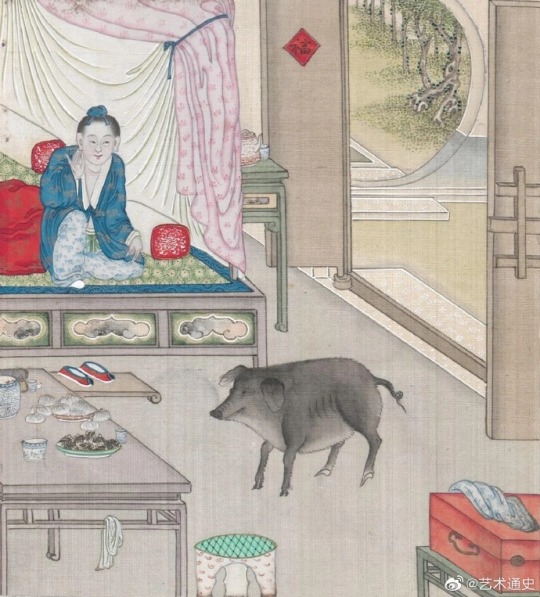
Qing Dynasty Comic Book: Illustration Set for Pu Songling Strange Tales
Qing dynasty comic: a set of illustrations for Strange Tales from the Liaozhai Studio (聊齋志異) by Pu Songling (蒲松龄). It is a collection of short stories about the supernatural, a genre popular in China for several centuries, featuring wizards, foxes and ghosts.
Archived in Austrian National Library.
Photo: ©艺术通史
#ancient china#chinese culture#chinese art#qing dynasty#chinese mythology#chinese painting#chinese calligraphy#ink painting#traditional painting#watercolor#inkart#chinese literature#Chinese fairy tales#fairy tales#supernatural#foxes#fox#ghost#chinese miniatures#miniature#miniature art#miniature painting#weird#weird dreams#weird art
50 notes
·
View notes
Text
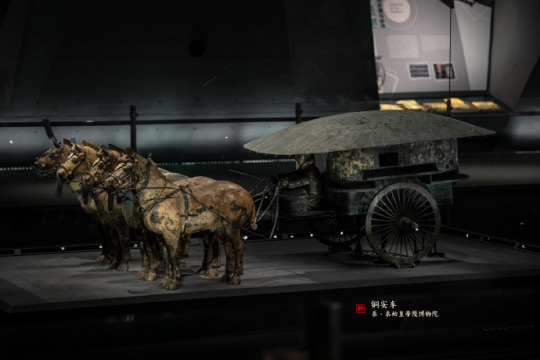

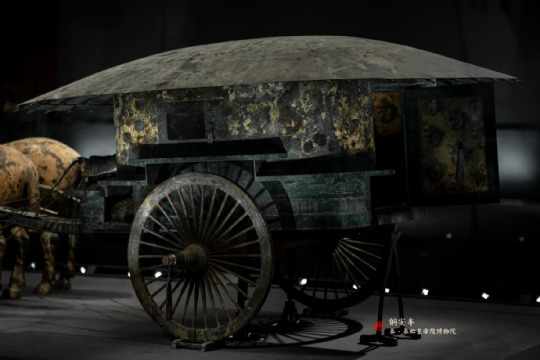




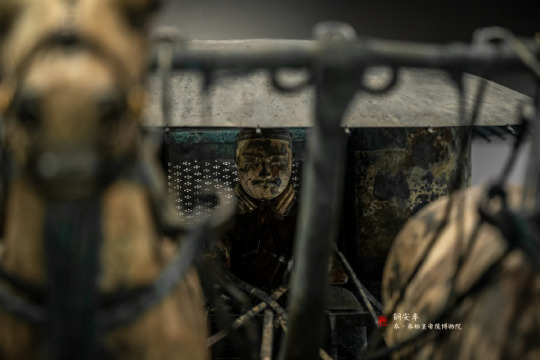

Canopy Chariot From The Emperor Qinshihuang Mausoleum
Qin dynasty chariot, unearthed from the burial pit on the west side of the Qinshihuang Mausoleum (秦始皇陵) in Lintong, Shaanxi.
The life-size painted chariot is 317 cm long and 106.2 cm high. Exhibited in the Emperor Qinshihuang's Mausoleum Site Museum (秦世皇黃陵博物院).
Vintage photos of the excavation and restoration:

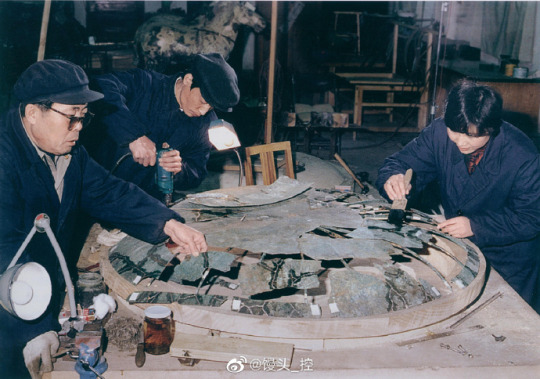

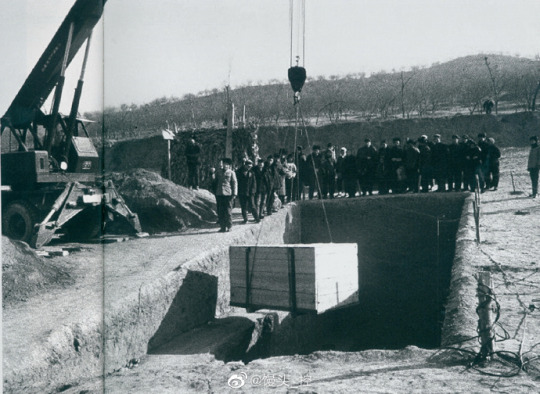


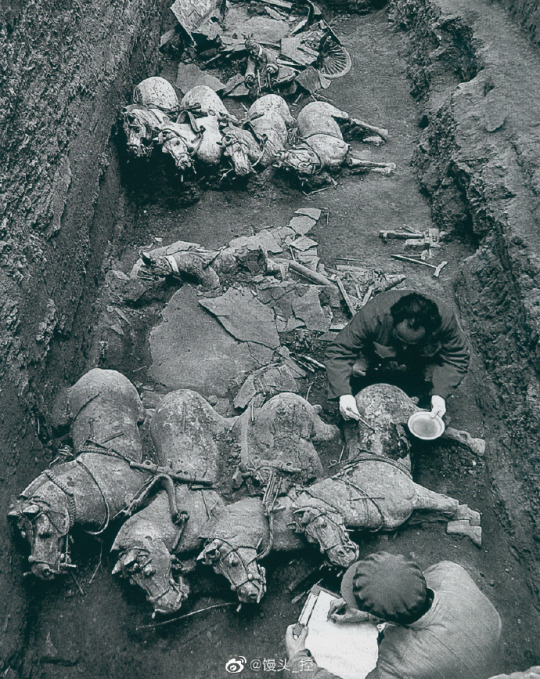
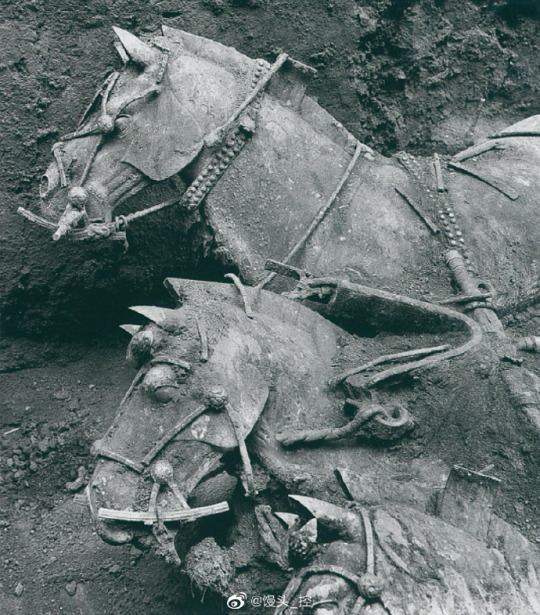
#ancient china#chinese culture#chinese art#chinese history#qin shi huang#chariot#qin dynasty#ancient tomb#archeology#chinese warfare#Terracotta Army#terracotta#mausoleum#tomb art#charioteer
64 notes
·
View notes
Text
Western Han Dynasty Horse Accessory
Bronze danglu (當盧) of the Western Han dynasty, unearthed from the tomb of the Marquis of Haihun (海未侯劉汪), Emperor Wu grandson, in Nanchang (南昌), Jiangxi. It is the most complete Western Han Dynasty tomb ever found.
The danglu (當盧), also known as xi (鍚), is a kind of ancient Chinese harness, attached to the bridle in the center of the horse’s forehead and fixed by the frontal strap. This horse…

View On WordPress
#ancient bronze#ancient China#bronze#Chinese armor#Chinese art#Chinese bronze#Chinese culture#Chinese history#harness#horse accessory#horse armor#Western Han dynasty
10 notes
·
View notes